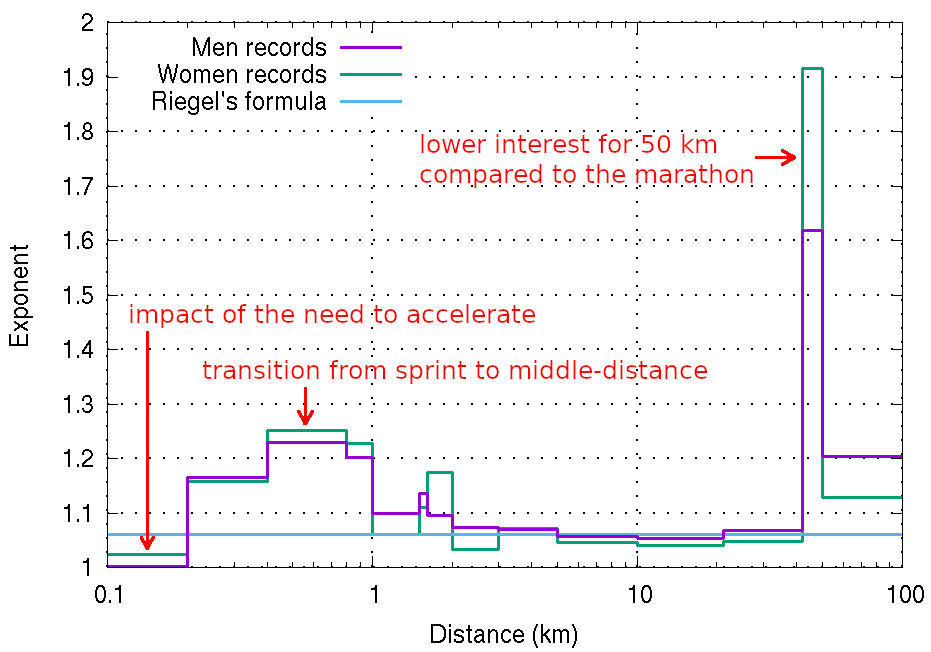
This form tells you what running times you should expect on different distances if you were to train specifically for those distances. The assumption is that your speed as a fraction of the world record is a constant that is the same for every distance.
The distances available are those with world records ratified by World Athletics. At the bottom of the table, there are two custom distances which you can set to anything you want (in meters). For custom distances, the running time is computed using interpolation or extrapolation from neighboring distances that have world records.
Distance you ran:
Time you took: h m s
Gender:
Units:
Your speed as a fraction of the world record:
Equivalent performances:
| Distance | Time | Pace | Speed |
|---|---|---|---|
A simple formula to predict performance is t2 = t1 × (d2 / d1)b where b can depend on the distance or other factors. Peter Riegel proposed using the constant b=1.06, which means that to double a distance you should reduce your speed by about 4% (= 2/(21.06) - 1). The graph below derives b experimentally using world records, excluding 5 km (road) and 10 km (road). It's not clear if the curve obtained from world records applies to amateurs without any change. Nevertheless, the world records method is reasonable and easy to understand. I annotated some of the features of the graph in red. It's probably possible to build a better model by compensating for the lack of professional interest in some distances, and by smoothing small features in the graph.

For women road races, the calculator uses the Mx record (mixed gender) as opposed to Wo (women only), because mixed gender race records seem to be more often quoted.
For 5 km and 10 km, there are world records for both track and road. The timings indicate that road is about 1.6% slower for men, and 0.5% faster for women (apparently, men pacers help more than the road surface penalizes). For custom distances, the calculator uses these figures to estimate road races shorter than 5 km, and track races longer than 10 km.
Comparing multiple formulas:
Using the VO2 max formula:
Using Riegel's formula t2 = t1 × (d2 / d1)1.06:
Others:
Page created: June 11, 2016
Page last updated: September 6, 2025